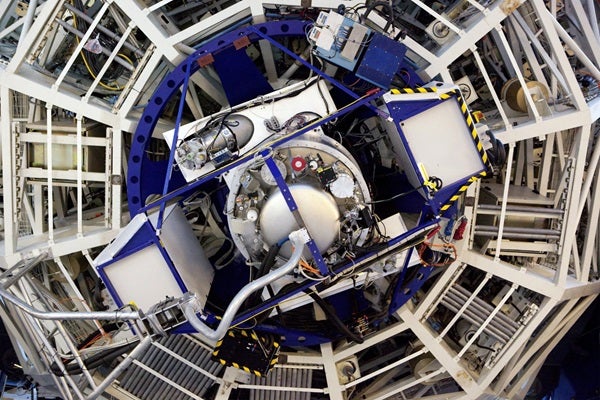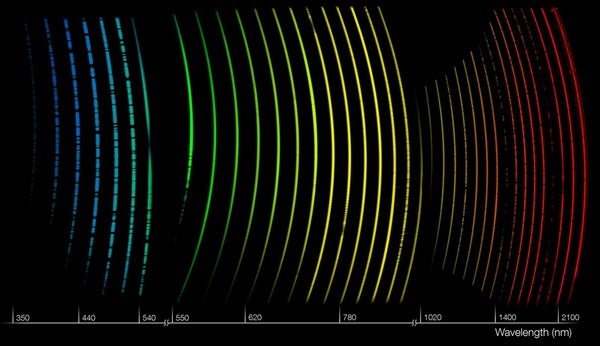The European Southern Observatory’s (ESO) Very Large Telescope — Europe’s flagship facility for ground-based astronomy — has been equipped with the first of its second-generation instruments: X-shooter. The new instrument can record the entire spectrum of a celestial object in one shot — from the ultraviolet to the near-infrared — with high sensitivity. This instrument will assist the study of distant exploding objects called gamma-ray bursts.
“X-shooter offers a capability that is unique among astronomical instruments installed at large telescopes,” said Sandro D’Odorico, who coordinated the Europe-wide consortium of scientists and engineers that built this instrument. “Until now, different instruments at different telescopes and multiple observations were needed to cover this kind of wavelength range, making it very difficult to compare data, which, even though from the same object, could have been taken at different times and under different sky conditions.”
X-shooter collects the full spectrum from the ultraviolet (300 nanometers) to the near-infrared (2,400nm) in parallel, capturing up to half of all the light from an object that passes through the atmosphere and the various elements of the telescope.
“All in all, X-shooter can save us a factor of three or more in terms of precious telescope time and opens a new window of opportunity for the study of many, still poorly understood, celestial sources,” D’Odorico said.
The name of the 2.5-ton instrument was chosen to stress its capacity to capture data efficiently from a source whose nature and energy distribution are not known in advance of the observation. This property is particularly crucial in the study of gamma-ray bursts, the most energetic explosions known to occur in the universe. Until now, a rough estimate of the distance of the target was needed, so as to know which instrument to use for a detailed study. Thanks to X-shooter, astronomers won’t have to go through this first observing step. This is particularly relevant for gamma-ray bursts, which fade away quickly, so being fast is the key to understanding the nature of these elusive cosmic sources.
X-shooter was built by a consortium of 11 institutes in Denmark, France, Italy and the Netherlands, together with ESO. In total, 68 person-years of work by engineers, technicians, and astronomers and a global budget of 6 million Euros were required. The development time was remarkably fast for a project of this complexity, which was completed in just over 5 years, starting from the kick-off meeting held in December 2003.
“The success of X-shooter and its relatively short completion time are a tribute to the quality and dedication of the many people involved in the project,” said Alan Moorwood, ESO director of programs.
The instrument was installed at the telescope at the end of 2008 and the first observations in its full configuration were made March 14, 2009, demonstrating that the instrument works efficiently over the full spectral range with unprecedented resolution and quality. X-shooter has already proved its full capability by obtaining the complete spectra of low-metallicity stars, X-ray binaries, distant quasars and galaxies, and the nebulae associated with Eta Carinae and the supernova 1987A, as well as with the observation of a distant gamma-ray burst that coincidently exploded at the time of the commissioning run.
X-shooter will be offered to the astronomical community starting October 1, 2009. About 150 proposals were received for the first runs of X-shooter, for a total of 350 observing nights, making it the second most-requested instrument at the Very Large Telescope in this period.











